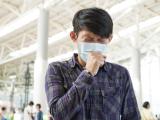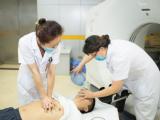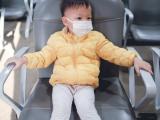May 2, 2003 (CIDRAP News) The worldwide cumulative case count for SARS (severe acute respiratory syndrome) topped 6,000 today with the addition of 207 new cases, including 176 in China, according to the World Health Organization (WHO). Twenty-six more SARS deaths were reported, bringing the global total to 417.
The cumulative case count stands at 6,054 in 27 countries, WHO officials said. The latest deaths included 11 in mainland China, 8 in Hong Kong, 5 in Taiwan, and 2 in Canada.
Taiwan has what the WHO called "a rapidly evolving outbreak," with 11 new cases reported since yesterday and a cumulative total of 100 cases, with 8 deaths. The country had only 41 cases a week ago, according to a New York Times report today.
Other recent SARS developments include reports of relapses in patients in Hong Kong and revision of the WHO case definition to include laboratory test results.
The WHO reported said 96 of the new cases in mainland China were in Beijing, which now has a cumulative total of 1,636 cases. Inner Mongolia reported 26 new cases, and new cases also were reported in four other provinces. Mainland China as a whole has a cumulative total of 3,799 cases.
"The next few months will prove crucial in the attempt to contain SARS worldwide, which now greatly depends on whether the disease can be controlled in China," WHO officials stated in an update yesterday.
In some apparent good news, India, which recently had been counted as having several SARS cases, was off the WHO list of countries with cases as of today. The WHO did not mention India in its updates yesterday or today, but an Indian Express report said WHO had declared India free of SARS. The report said a man who had what was considered a probable case had been found to be free of the virus. Another 19 people tested positive for the virus but were not sick, the report said.
Yesterday WHO dropped the United States and the United Kingdom from its list of countries with recent local SARS transmission, because no locally acquired cases had been reported in either country within the previous 20 days. Places remaining on the list, which is posted on the WHO Web site, are Canada, several provinces of mainland China, Hong Kong, and Singapore.
As of Apr 30, the United States had 56 probable and 233 suspected SARS cases in 38 states, the Centers for Disease Control and Prevention (CDC) reported yesterday. The SARS coronavirus (SARS-CoV) has been confirmed by laboratory tests in 6 of the 56 probable cases, the CDC said. Fifty-four case-patients41 suspect and 13 probablehave tested negative for the virus.
In Hong Kong, health officials said this week that 12 patients who had been discharged from hospitals had relapses, according to the New York Times report. Officials also said it appeared that patients may still shed the SARS virus after apparently recovering from the disease.
Health officials quoted in the story said relapses were occurring as late as the third week after patients' discharge from hospitals, but they offered little information beyond that. In discussing the evidence of post-recovery viral shedding, officials said it was not clear how infectious the patients might be or for how long. So far, no patients have been known to have spread the virus after leaving the hospital, the report said.
On the diagnostic front, WHO officials today updated their SARS case definition to include laboratory test results. The agency said a positive test result from a reputable lab is sufficient to classify a case as probable, but a negative test result does not warrant ruling out the illness.
"WHO is concerned that inappropriate use of laboratory results can have a negative impact on patient management and selection of an appropriate level of infection control," the WHO report says. "Therefore, negative test results for the SARS virus cannot be used to exclude infection in either suspect or probable cases. In contrast, positive results of quality-assured laboratory testing can add to the efficacy of SARS case management, provided tests are properly conducted and interpreted.
"Positive virus results form lab tests demonstrate that the patient is excreting virus, or its genetic material, and thus might pose a risk of disease transmission to others. Consequently, suspect SARS cases with a positive lab result (virus isolation or PCR [polymerase chain reaction]) should be classified and reported as probable cases."
The CDC revised its surveillance case definition to include lab tests earlier this week, but said the definition should be used only for case reporting, not clinical management.
See also:
WHO SARS site
http://www.who.int/csr/sars/en/
CDC SARS site
http://www.cdc.gov/ncidod/sars/




















